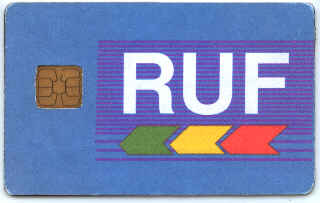
Travel by individual public RUF
The system operator owns 50,000 individual RUF vehicles which he can let to the users on a day-to-day basis or per trip. The users all have a personal smart card, which can be used to open the RUF and to pay for single trips.
Over a number of years 25,000 of the 50,000 RUFs are let to users paying $8/day in order to have a RUF at their disposal for commuting and outside working hours. The users will typically be people working in the dense parts of the town where parking is extremely costly. During working hours the RUF is available for public use in the town by means of a personal smart card. This way, damage to the public vehicles is prevented.
Other 25,000 pay $12/day in order to have the RUF at their full disposal (excl. insurance). The users are typical commuters with easy access to parking at their workplaces.
Since such a service will provide immediate advantages for the users by means of avoiding congestion, a relatively high support is to be expected. The following calculations apply when all 50,000 RUFs have been let.
It is estimated that an occupancy level of the rail network to RUF resembles that of the MAXI-RUF meaning that 32,000 RUFs can operate on the network at the same time. A typical commuter trip of 12 miles (of which 3 miles will typically be on a road) will last 7.5 minutes meaning that 256,000 RUFs an hour can travel via the network. This corresponds to a possible passage of 768,000 RUFs via the rail network during 3 rush-hours.
It is estimated that the rail network will be used by 90% privately owned RUFs and 10% public RUFs.
